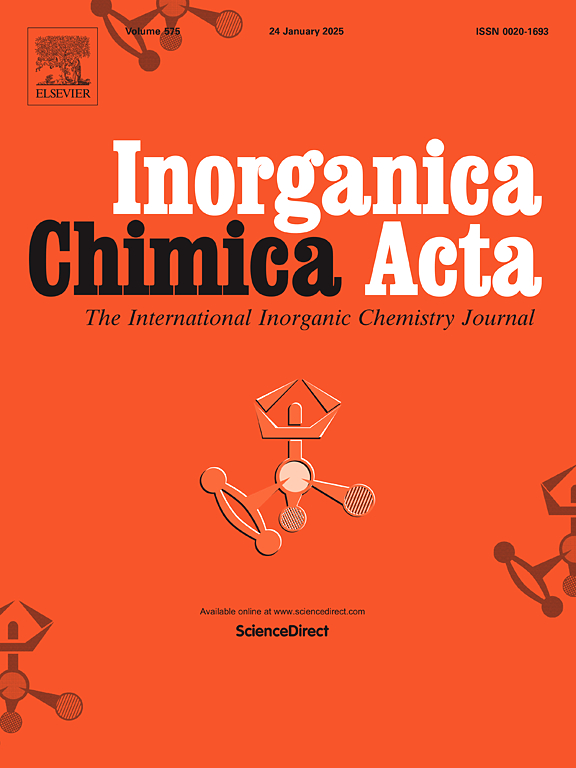Bimetallic copper complexes of a new amide-based heptadentate N6O ligand: Design, syntheses, structures, and spectroscopic characterization
IF 2.7
3区 化学
Q2 CHEMISTRY, INORGANIC & NUCLEAR
引用次数: 0
Abstract
A new dicompartmental N6O heptadentate ligand has been prepared by linking two bis(pyrazolyl)methane donor groups to a phenol core via amide bridges attached to the 2 and 6 positions of the arene ring. The ligand But-Ph(OH)–[NH–C(O)–CH(pz)2]2 (H3L, pz = pyrazolyl ring) forms the neutral complexes {But-Ph(O)–[N–C(O)–CH(pz)2]2}[Cu2(μ-O2C–CH3)] (1), and {But-Ph(O)-[N–C(O)–CH(pz)2]2}{Cu2[μ-O2C–CH(NI)–CH(CH3)(CH2CH3)]} (2, NI = 1,8-Naphthalimide). These compounds were characterized by 1H NMR, IR, and UV–Vis spectroscopies, as well as single crystal X-ray diffraction. Their common structural features consist of a triply deprotonated [L]3- ligand, bridging two copper(II) ions through the phenoxido oxygen atom. The neutrality of the complexes is ensured by the exogenous ![]() C(O)O− bridges. As a consequence, the distances between the Cu2+ ··· Cu2+ ions were found to be about 3.5 Å in both cases. Each copper center is also coordinated by three nitrogen atoms, originating from the deprotonated amide group and the two pyrazolyl rings of the side-arms of the ligand. As such, the geometry around the copper ions can be described as a distorted square pyramid.
C(O)O− bridges. As a consequence, the distances between the Cu2+ ··· Cu2+ ions were found to be about 3.5 Å in both cases. Each copper center is also coordinated by three nitrogen atoms, originating from the deprotonated amide group and the two pyrazolyl rings of the side-arms of the ligand. As such, the geometry around the copper ions can be described as a distorted square pyramid.

求助全文
约1分钟内获得全文
求助全文
来源期刊

Inorganica Chimica Acta
化学-无机化学与核化学
CiteScore
6.00
自引率
3.60%
发文量
440
审稿时长
35 days
期刊介绍:
Inorganica Chimica Acta is an established international forum for all aspects of advanced Inorganic Chemistry. Original papers of high scientific level and interest are published in the form of Articles and Reviews.
Topics covered include:
• chemistry of the main group elements and the d- and f-block metals, including the synthesis, characterization and reactivity of coordination, organometallic, biomimetic, supramolecular coordination compounds, including associated computational studies;
• synthesis, physico-chemical properties, applications of molecule-based nano-scaled clusters and nanomaterials designed using the principles of coordination chemistry, as well as coordination polymers (CPs), metal-organic frameworks (MOFs), metal-organic polyhedra (MPOs);
• reaction mechanisms and physico-chemical investigations computational studies of metalloenzymes and their models;
• applications of inorganic compounds, metallodrugs and molecule-based materials.
Papers composed primarily of structural reports will typically not be considered for publication.
 求助内容:
求助内容: 应助结果提醒方式:
应助结果提醒方式:


